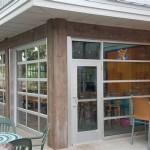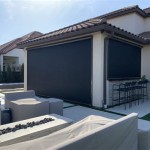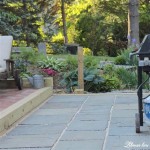Best Ways to Repair a Cement Patio: Restoring Beauty and Functionality
Cement patios, prized for their durability and versatility, are common features in residential landscapes. However, exposure to the elements, heavy usage, and ground movement can eventually lead to cracks, spalling, and other forms of damage. Addressing these issues promptly not only enhances the patio's aesthetic appeal but also prevents further deterioration and potential safety hazards. A strategic approach to cement patio repair involves accurately assessing the damage, selecting appropriate repair methods, and executing the repairs with precision. This article outlines several effective techniques for repairing cement patios, helping property owners choose the most suitable approach for their specific needs and conditions.
Assessing the Damage
Before embarking on any repair project, a thorough assessment of the patio's condition is paramount. Different types of damage require different repair strategies. Begin by cleaning the patio surface, removing dirt, debris, and any loose material. This will provide a clear view of the extent of the damage.
Cracks: Cracks are perhaps the most common issue encountered in cement patios. They can range from hairline fractures to wide, deep fissures. Hairline cracks, often caused by shrinkage during the curing process, are mostly cosmetic, while wider cracks indicate more significant structural problems. Determining the width, depth, and pattern of cracking is crucial. Are the cracks isolated or interconnected? Do they appear to be actively growing? Active cracks, which widen over time, suggest ongoing movement in the underlying soil or concrete slab. Map the cracks with a marker to track their progression.
Spalling: Spalling refers to the chipping or flaking of the concrete surface. It often occurs due to freeze-thaw cycles, where water penetrates the concrete, freezes, and expands, causing the surface to break away. Spalling can also be caused by the use of de-icing salts or improper mixing of the concrete. Note the extent and depth of the spalling damage. Small areas of shallow spalling may be addressed with patching compounds, while larger or deeper areas may require more extensive repairs.
Settling and Unevenness: Over time, sections of a cement patio may settle, creating uneven surfaces and tripping hazards. Settling can be caused by soil erosion, inadequate soil compaction during construction, or tree root intrusion. Use a level to identify areas where the patio is sinking or tilting. Determine the severity of the settling and whether it affects the entire patio or only localized areas. Major settling issues may necessitate lifting or replacing sections of the patio.
Stains and Discoloration: While not structural damage, stains and discoloration can detract from the patio's appearance. These can be caused by oil spills, rust, algae growth, or general weathering. Identify the source and nature of the stains. Surface stains can often be removed with specialized cleaners, while more deeply embedded stains may require more aggressive cleaning methods or resurfacing.
Repair Methods: Addressing Common Patio Problems
Once the damage has been thoroughly assessed, selecting the appropriate repair methods becomes the next critical step. Several techniques are available, each suited to specific types of damage and varying levels of severity.
Crack Repair with Concrete Patching Compound: For narrow cracks (less than 1/4 inch), a concrete patching compound is often a suitable solution. This involves cleaning the crack thoroughly, removing any loose debris, and applying the patching compound according to the manufacturer's instructions. A concrete crack filler can be used for narrower cracks, applied with a caulking gun.
Crack Repair with Epoxy Injection: For wider or deeper cracks, epoxy injection is a more robust repair method. This involves cleaning the crack, sealing the surface with an epoxy sealant (except for injection ports), and injecting epoxy resin under pressure into the crack. The epoxy fills the crack, bonding the concrete back together and preventing water from seeping in. This method is particularly effective for cracks that are actively moving and require a strong, durable repair.
Surface Resurfacing: When a patio suffers from widespread surface damage, such as extensive spalling or discoloration, resurfacing may be the most efficient solution. This involves applying a thin layer of concrete topping over the existing surface, creating a fresh, new appearance. Surface resurfacing can also be used to add decorative patterns or textures to the patio. The existing surface needs to be properly prepared through cleaning and profiling (roughening) to ensure proper adhesion of the topping mix.
Concrete Overlay: A concrete overlay is a thicker application of a cement-based material than resurfacing and is often used where the existing surface is too damaged or uneven to simply resurface. Overlays can add significant structural integrity, as well as provide a new decorative surface. Similar to resurfacing, proper surface preparation is vital.
Replacing Damaged Sections: In cases of severe settling, extensive cracking, or significant spalling, replacing the damaged sections of the patio may be necessary. This involves removing the compromised concrete, preparing the subgrade, and pouring new concrete to match the existing patio. This is the most involved repair method, but it provides the opportunity to address underlying issues, such as poor drainage or inadequate soil compaction.
Mudjacking or Slab Jacking: To address settling issues without completely replacing the patio, mudjacking or slab jacking can be employed. This process involves injecting a grout mixture (typically a combination of cement, soil, and water) through small holes drilled in the concrete slab. The grout fills the voids underneath the slab, lifting it back to its original position. This method is cost-effective for correcting minor to moderate settling problems; however, it is essential to address the underlying cause of the settling to prevent it from recurring.
Preparing for the Repair Process
Effective execution of any cement patio repair requires careful preparation. This includes gathering the necessary tools and materials, preparing the work area, and following specific steps for each repair method.
Tools and Materials: The specific tools and materials required will vary depending on the chosen repair method. However, some common items include: concrete patching compound or epoxy resin, concrete crack filler, concrete cleaner, wire brush, chisel, hammer, trowel, mixing bucket, mixing drill, safety glasses, gloves, dust mask, pressure washer (optional), and a concrete saw (for replacing sections). Additional materials may include: form lumber, rebar (for reinforcement), and sand or gravel (for subgrade preparation).
Surface Preparation: Regardless of the repair method, proper surface preparation is essential for achieving a durable and aesthetically pleasing result. This typically involves cleaning the patio surface thoroughly, removing any loose debris, and roughening the surface to promote adhesion. A pressure washer can be used to remove dirt, algae, and loose material. A wire brush or chisel can be used to remove stubborn debris and roughen the surface. For resurfacing or overlay applications, a concrete grinder may be necessary to create a sufficiently rough profile.
Weather Considerations: Cement repair products require specific temperature ranges for proper curing. Avoid applying concrete patching compounds or epoxy resins during extreme temperatures (below 50°F or above 90°F) or when rain is imminent. High humidity can also affect the curing process. Consult the manufacturer's instructions for specific temperature and humidity recommendations.
Safety Precautions: Always wear appropriate safety gear when working with cement products. This includes safety glasses to protect your eyes from dust and debris, gloves to protect your hands from chemicals, and a dust mask to prevent inhalation of cement dust. When using power tools, such as concrete saws or grinders, wear hearing protection and follow all safety guidelines.
Mixing and Application: Carefully follow the manufacturer's instructions when mixing and applying concrete patching compounds, epoxy resins, or resurfacing materials. Proper mixing ratios and application techniques are crucial for achieving optimal results. Avoid adding too much water to concrete mixes, as this can weaken the cured concrete. Apply patching compounds in thin layers to prevent cracking. Allow sufficient curing time before exposing the repaired areas to heavy traffic.
Implementing these repair methods with meticulous preparation and adherence to manufacturer guidelines will ensure a longer patio lifespan and maintain its aesthetic appeal, contributing to the overall value of the property.

How To Repair And Resurface Old Concrete Patios Fixing Ugly

5 Ways To Fix Ed Or Damaged Concrete Patio Cricket Pavers

Arlington Heights Concrete Repair Hero

Concrete Patching How To Bond Existing For Best Results Sakrete

Ed Concrete See How We Repaired Our Gross Patio 2024

How To Repair Concrete Patios Resurfacing Sealing Resin

How Can I Salvage A Crumbling Ed 24x24 Triangle Shaped Concrete Patio Without Tearing It Out Hometalk

The Best Way To Fix A Ed Patio

The Best Way To Repair A Ed Or Damaged Concrete Patio Arrak

How To Repair A Patio S Grouting Sinking Checkatrade
Related Posts








